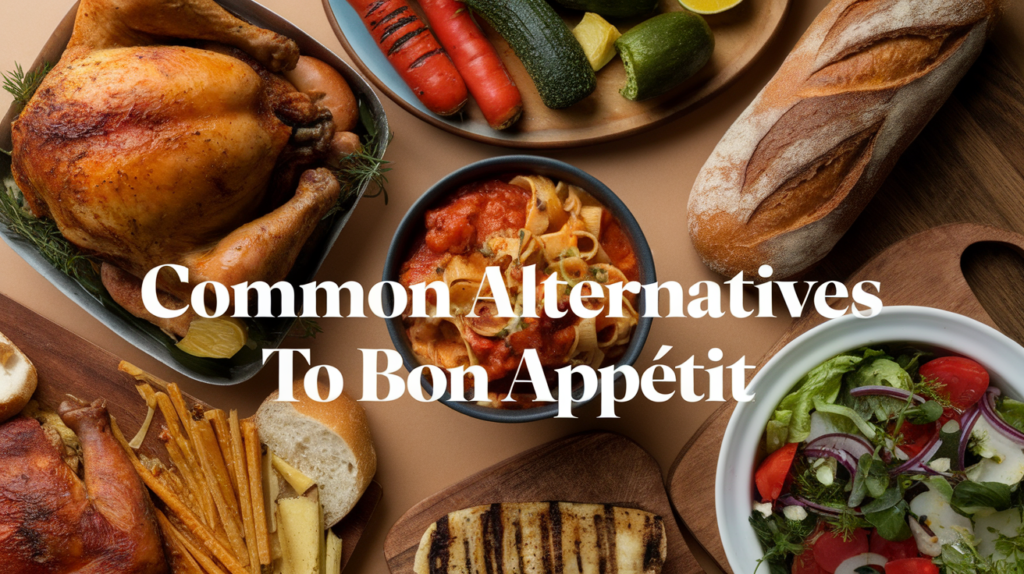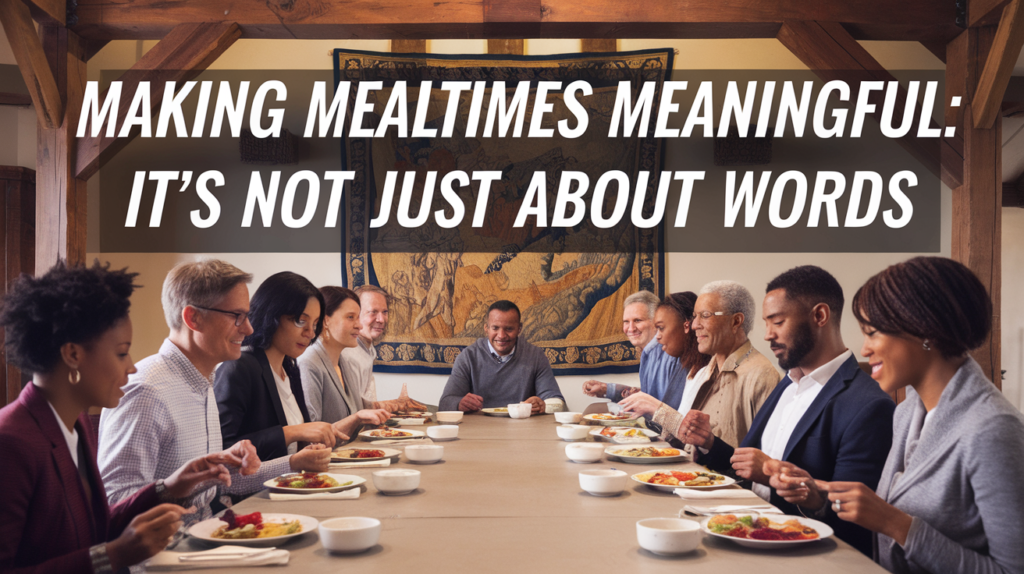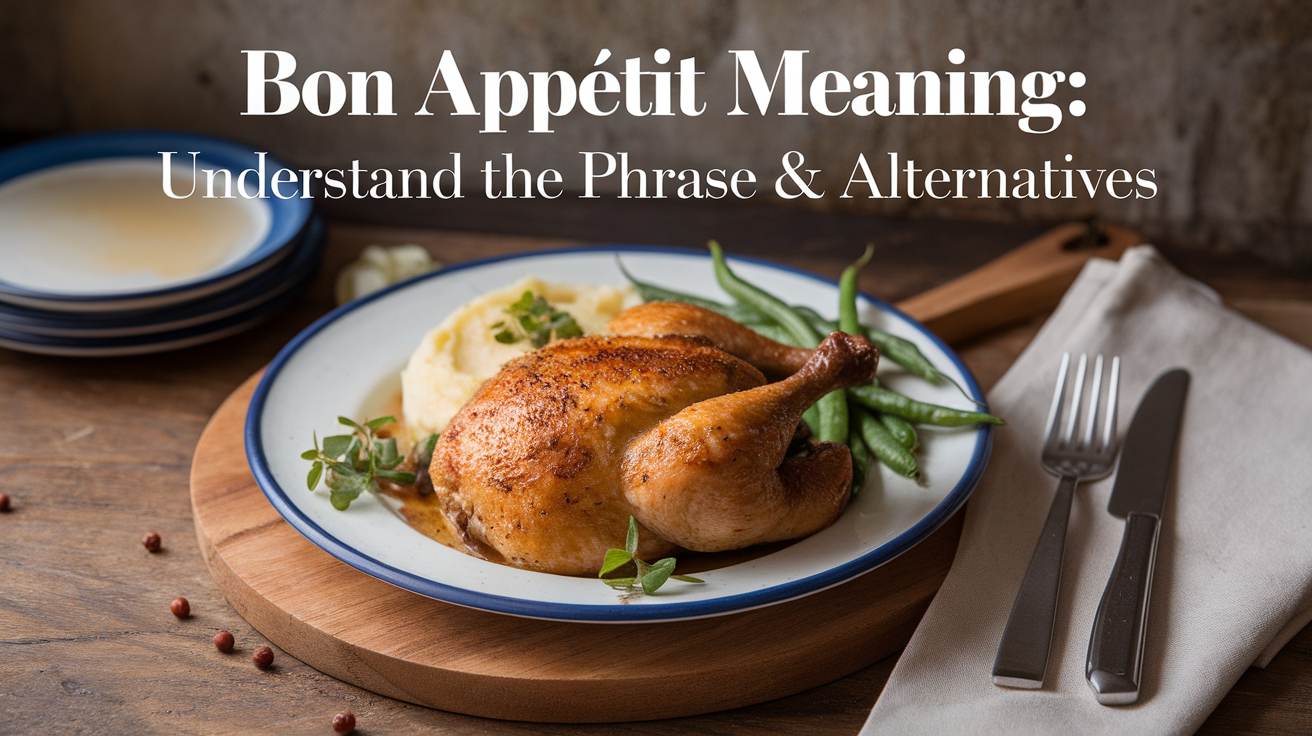Whether you’ve heard it in a fancy French restaurant or from a friend right before digging into a delicious meal, the phrase “Bon appétit” might already sound familiar. But have you ever stopped to ask, what does bon appétit really mean? And more importantly, is it still the best way to wish someone a good meal in today’s diverse and modern dining culture?
In this article, we’ll explore the bon appétit meaning, its origin, proper usage, and a few alternatives to bon appétit that you can use in both casual and formal settings. From understanding the cultural context to learning phrases that better fit different occasions, we’ve got you covered.
Bon Appétit Meaning: A Taste of French Culture
At its core, “Bon appétit” is a French expression that translates literally to “good appetite” in English. But it’s more than just a direct translation—it’s a social ritual. When someone says “Bon appétit” before a meal, they’re essentially saying, “Enjoy your food!” or “Hope you have a good meal!”
This phrase is deeply rooted in French dining etiquette and reflects a culture that takes food seriously—not just for sustenance, but as a celebration of flavors, company, and tradition.
Why Do People Say “Bon Appétit”?
Saying bon appétit is a polite, almost ceremonial gesture. It acknowledges that the meal is about to begin and brings attention to the shared experience of eating. While it’s common in France and in many multilingual dining settings, it has also found its way into English-speaking cultures, especially in restaurants and food-related content.
Is Saying “Bon Appétit” Polite or Problematic?
While bon appétit is generally considered polite, some etiquette experts and cultural commentators have argued that it may not always be appropriate. For example:
- In traditional French etiquette, saying bon appétit at the table was once seen as unnecessary or even vulgar—it assumed the guest needed to be reminded to enjoy food.
- In modern global settings, some people view it as outdated or overly formal, especially when simpler alternatives exist.
So, while it’s not wrong to say it, understanding the setting and your company helps you choose the right words.
Common Alternatives to Bon Appétit (And When to Use Them)

Sometimes you want to switch it up or sound more natural in your own language. Here are a few modern and friendly alternatives to bon appétit:
- Enjoy your meal! Classic and casual. Great for both home dinners and professional settings.
- Dig in! Very informal and friendly—perfect for meals with friends or family.
- Let’s eat! A cheerful invitation to begin the meal together.
- Happy eating! Playful and casual, often used in foodie communities or blogs.
- Time to feast! Fun and expressive—ideal for special occasions or big meals.
Each phrase fits different vibes, so feel free to mix and match depending on your guests and the atmosphere.
Cultural Variations: How Other Languages Say “Bon Appétit”
Here’s how other cultures express the same sentiment as bon appétit:
- Italian: Buon appetito!
- Spanish: ¡Buen provecho!
- German: Guten Appetit!
- Arabic: Bil hana wal shifa (with happiness and health)
- Japanese: Itadakimasu (said before meals, expressing gratitude)
Understanding these alternatives not only adds flavor to your vocabulary but also shows respect for diverse dining traditions.
When (and When Not) to Use Bon Appétit
While bon appétit is still widely accepted and even appreciated in many settings, here’s when to use it—and when you might want to consider something else:
Use it when:
- You’re dining in a French restaurant or with French-speaking guests
- You’re hosting a formal dinner
- You want to add a touch of elegance to the meal
Avoid it when:
- The setting is extremely casual (e.g., a fast-food lunch with friends)
- You’re unsure how your guests feel about formality
- You’re writing for a modern audience that may prefer simpler language
Making Mealtimes Meaningful: It’s Not Just About Words

Ultimately, whether you say bon appétit, enjoy your meal, or just start eating, what matters most is the intention. A warm gesture or smile, thoughtful food, and good company can say more than any phrase ever could.
So go ahead—use what feels right for the moment. Language should serve connection, not get in the way of it.
FAQs About Bon Appétit
1. Is “bon appétit” used in English?
Yes, many English speakers use it, especially in restaurants or food-related settings. It’s considered polite and a bit fancy.
2. Can you say bon appétit in casual settings?
You can, but depending on the crowd, something like “Enjoy!” or “Dig in!” might feel more natural.
3. What’s the origin of bon appétit?
It comes from French dining culture, where meals are social events and expressions of appreciation are common.
4. Is it rude not to say anything before eating?
Not necessarily. In many cultures, starting to eat without a formal phrase is normal. But sharing a kind word is always a plus.
5. Are there modern ways to say bon appétit online?
Absolutely! Phrases like “Happy munching!” or emojis like 🍽️ and 😋 are fun and relatable on social media.
Conclusion: Choose Words That Fit the Meal—and the Moment
Bon appétit is more than just a fancy phrase—it’s a reflection of how we connect over food. Whether you stick with tradition or explore modern alternatives, the key is sincerity. Whether you’re at a formal dinner, hosting friends, or writing about food online, choose the phrase that makes your guests feel welcome and appreciated.So next time someone sets down a plate in front of you, whether you say bon appétit, enjoy, or just smile and nod—remember, it’s all about sharing good food and good vibes.
















